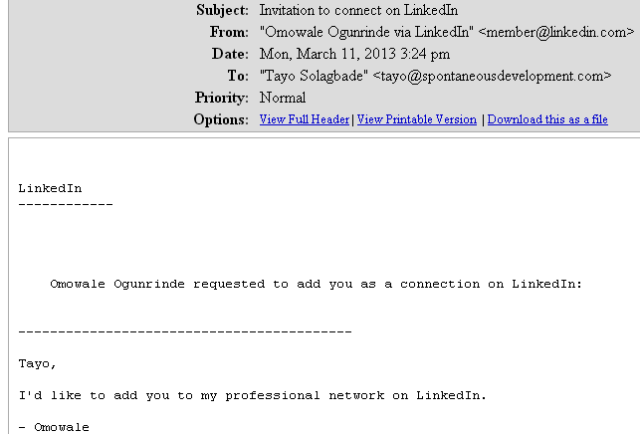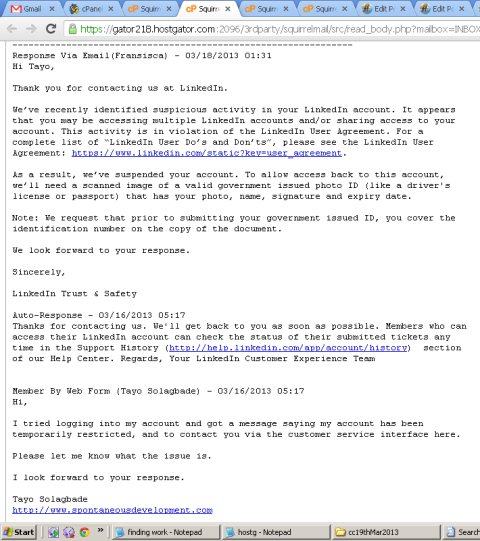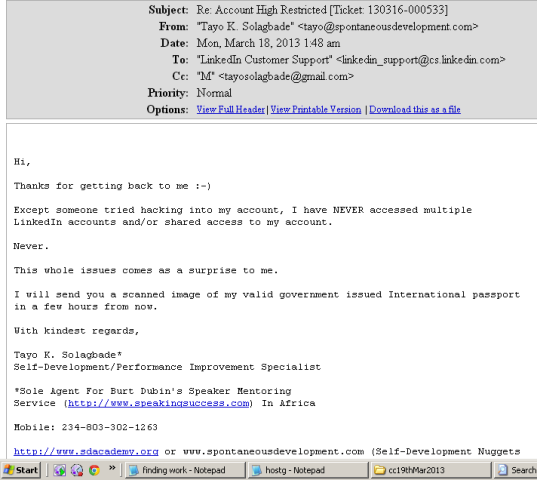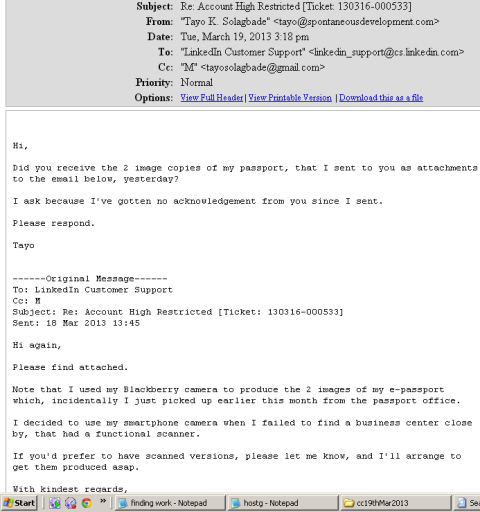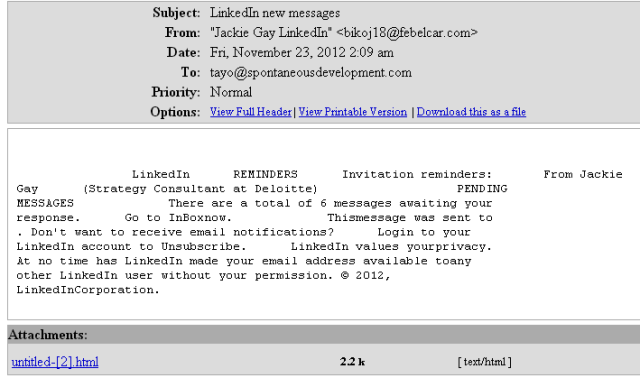I wrote the post below last month, and promised to publish an update once any new development occurred. You can read this new post titled “Why I’ve Told LinkedIn to Delete My Profile (Talk About Trying to Give a Dog a Bad Name to Hang It)”
====
My name is Tayo Solagbade. Since 2002 (after I quit my job with Guinness to go into self employment), I’ve worked as a Performance Improvement Specialist & Multipreneur. If You Can’t Find Me On LinkedIn.com, this post explains why. I’m not sure how long this will last – or if it will ever go away, so I’m doing this post as a form of damage control. On Saturday 16th March 2013, I tried to login to my LinkedIn.com account from my Blackberry, but got an unusual response from the login authetication system. It basically said my account had been “temporarily restricted”.
Surprised, I tried going directory to my profile page, and got a page not found message.
I’ve only been using LinkedIn actively in the past 2 years or so, even though I registered and created a basic profile on it about 5 years earlier. So, I still feel there are things I may not know how to do well enough…
As a result, when I got that message from the LinkedIn.com website, I felt I was missing something. “Maybe they’ve changed the way the site works.” I thought.
And I had good reason to think that since the LinkedIn for Blackberry app I’d found useful for nearly a year suddenly one day stopped working. Each time I tried logging into my account using the app, I got a message from the LinkedIn.com website saying an error had occurred and that a message had been sent to LinkedIn.com.
The above happened a few months ago. So I began using the site from my Blackberry browser, but discovered I could not post updates from there.
Consequently, every time I needed to do an update, I had to visit the website from my Laptop to post my updates. I would then go back to working from my Blackberry.
Now, back to the website login and missing profile palavar:
When this new headache occurred I tried to think…
Then I recalled receiving a connection request just a few days earlier – Monday the 11th March 2013 to be specific – from Omowale Ogunrinde (See below).
I’d already accepted that invitation. So I tried going directly to my profile page from within that email. What I got was the same Page Not Found error!
Right now as I type these words – I just checked – and I notice it now leads to a “Service Unavailable” page, when I try to login and also when I try to view my profile page.
I cannot help wondering what people who click from search engines, and other places to view my LinkedIn profile will think…but there’s only so much I can do – like put up this post 
By the time I tried doing the same thing from the laptop, I knew there was trouble. The system basically told me I needed to get in touch with the LinkedIn.com support department to sort out the issue.
So I went to the website form from the error page in the browser and sent a message to them. The reply came as shown below – saying my account had been suspended for doing things I have NEVER done before. NEVER!
I replied and told them and told them the only way that could have happened was if my account had been hacked – and that was possible (see phony LinkedIn invitations I’ve constantly received for over a year at the bottom of this post).
I’ve since sent them image copies of my passport as requested (see screenshot above) on 18th March 2013, but have not heard back from them. Up till this moment as I make this post – my profile remains unavailable!
Again I cannot help wondering what what people who click from search engines, and other places to view my LinkedIn profile will think…
It’s hard enough already that I have to deal with the issues arising from living and working online from Nigeria…what with all the 419 and online scam issues associated with this country!
SUMMARY
I’ve lost count of the number of affiliate programs that have rejected my application which I sent in an effort to use monetize this blog. Most simply do not respond. Some bluntly tell me they do not accept people from my country. It’s like a stigma – I honestly feel I know what it’s like to be a leper.
But a few have been willing to take a risk by relating with me. I’m determined to make sure they look good for doing so.
Sometimes I cannot help feeling I’ m being second guessed because of where I live and work from.
Last year a very popular web based marketing company responded to my request to know what conditions would make it possible for me to join their network so as to get clients through them. The simple answer was that I should relocate my business and operations to another country.
Anyway, the point of this post is simply to put on record details of why my LinkedIn.com profile has disappeared. If/when it comes back online, I’ll do an update here.

